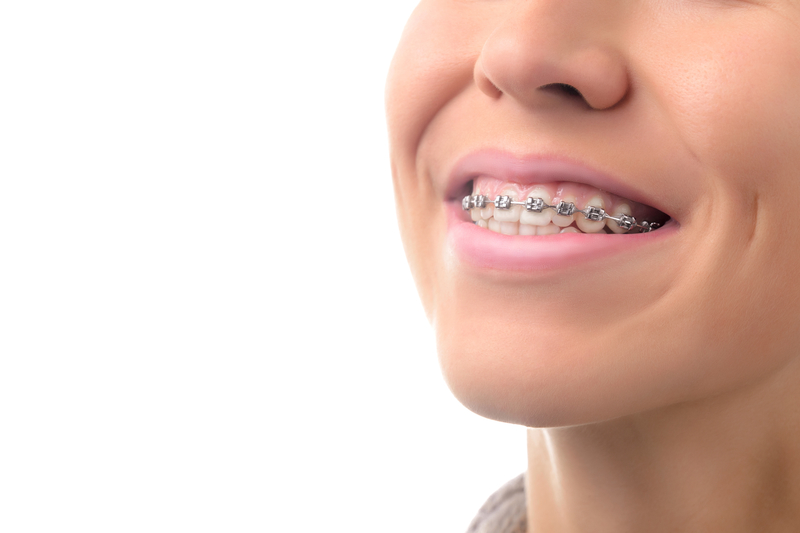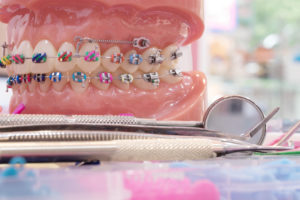Temporary Anchorage Devices: What Are They?

Whenever our teeth need an extra push to shift them into a straighter position, orthodontists will typically install a temporary anchorage device, commonly known as a “TAD.” Although they’re not used in every case, they help pull, push, and lift difficult to adjust teeth into the correct position. If your orthodontist recommends that you have a TAD, read through this guide to understand how they function and what you can do to maintain them!
Origins of Orthodontia
Poorly aligned jaws and teeth have been a nuisance to mankind since the beginning of time, so it’s no surprise that orthodontics has been around for so long. Archaeologists have found human remains with crooked teeth dating back 50,000 years; interestingly enough, the remains of some ancient civilizations, like Egypt, have been found with crude metal bands around their teeth, a form of orthodontics very similar to braces that we see nowadays. The ancient Greek, the Etruscans, and the Romans also practiced orthodontia and kept records of their discoveries. The ancient Greek physician, Hippocrates, was the first to describe teeth irregularities around 400 BC, and centuries later, Celcus would advise bringing newly emerging teeth into their proper position by pushing them with your fingers.
By the 1700 and 1800s, orthodontics was developing rapidly. Pierre Fauchard, the “Father of Dentistry,” would create the bandeau that allowed teeth to align correctly by using a strip of metal with regularly spaced holes that fit around the teeth. During the 20th century, Edward Hartley Angle would identify the true properties of a malocclusion, or misalignment, and begin addressing them with an effective set of orthodontic appliances that were developed much earlier. By the 1970s, braces would further advance through the invention of dental adhesives that would allow orthodontists to stick brackets to teeth surfaces rather than wiring them around each tooth. Stainless steel replaced gold and silver that were previously used as the wire, which helped reduce the cost of braces significantly. Even with the impressive advances that we have made since the beginning of orthodontics, patients around the world still suffer from advanced teeth and jaw malocclusion that normal braces can’t resolve on their own. For the purpose of increasing the effectiveness of braces, other orthodontic devices have been invented to facilitate this process.
Orthodontic Devices
Whenever we think of “orthodontics,” we innately assume braces. Braces have two basic parts: brackets and wires. Wires move the teeth and brackets serve as a stationary holder for the wires. Contemporary braces can be stainless steel, gold-colored, or tooth-colored ceramic. Most braces go on the front of the teeth, but there are some, called lingual braces, that are fastened onto the backs of teeth that are virtually invisible. Lingual braces are not the same as clear aligners, which is another orthodontic device. Clear aligners are made of a transparent plastic-like material and are considered “invisible braces.” They are made to fit the patient’s teeth at different stages of treatment. Each set of aligners is worn for 1-3 weeks for at least 22 hours a day, and are designed to move the teeth incrementally until the next set is used. While these types of braces are a very common sight to see in many homes, schools, and workplaces, they aren’t the only devices used to move teeth and align jaws. Power chains are sometimes used with braces for an added push. They are stronger than the traditional elastic rings and can apply an extra force when needed. The last orthodontic device that is commonly used, although many patients don’t know what their purpose is, is a temporary anchorage device, or TAD.
TADs
Temporary anchorage devices, most commonly known as TADs, are used in some orthodontic cases to help shift the teeth into a straighter position when traditional braces can’t do it on their own. For this reason, not everyone needs them. TADS use titanium mini-screws (sometimes called mini-implants or micro-implants) that provide a fixed object that can be used to push, pull, lift, or intrude teeth that are being straightened. TADS don’t move and can be placed in many different parts of the mouth, so they are highly efficient at moving difficult teeth back into proper alignment. Before TADs are ever inserted into your mouth, though, your orthodontist will evaluate your teeth and determine whether your malocclusion is severe enough to receive a TAD. Before insertion, your gum tissue and jaw area will be numbed so that the procedure will be nearly painless. The TAD is then placed into your jawbone, and will eventually be removed once your orthodontist feels that it is no longer needed for straightening your teeth.
Just like braces, it may take a couple of days for the discomfort to subside and your mouth to get used to the TAD. Try taking an over-the-counter pain relief medication to alleviate any excessive discomfort. An important part of maintaining your TAD is continuing your oral hygiene regimen. Continue to brush your teeth at least twice a day and use mouthwash with antimicrobial ingredients. As long as your gums are healthy throughout the duration of your treatment, you shouldn’t have any complications with your TAD.
Get Straighter Teeth Today
To learn more about TADS, or to schedule an appointment to begin your treatment plan for braces, call Belmar Orthodontics at (303) 225-9016! At Belmar Orthodontics, we have a highly skilled and experienced team that is happy to help you start your journey to a healthier and happier smile.

